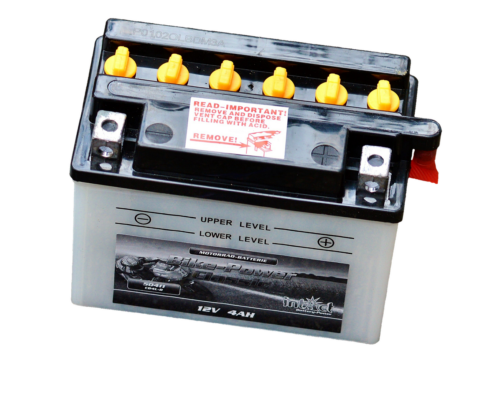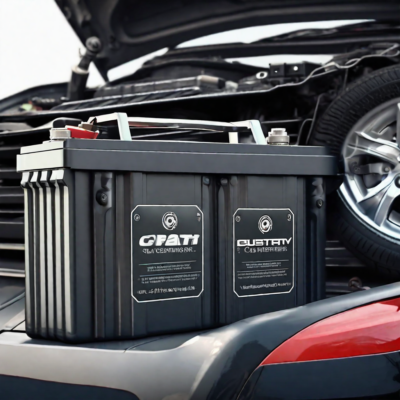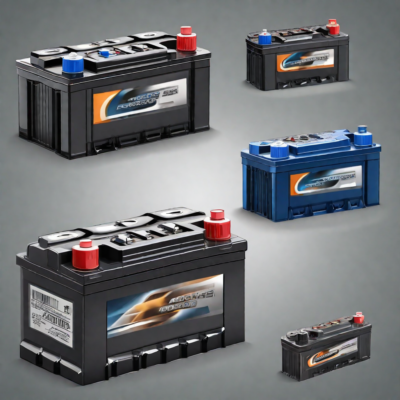An Introduction to Batteries
If you just got into caravanning or camping, chances are you’ll be delving into the wonderful world of batteries.
There are Lithium and AGM. Various amp sizes, series or parallel. How big of a battery do you need for your fridge? Your caravan? Your whatever.
Well, here we’ll be answering some of those questions. And a few more.
Batteries are the unsung heroes of our modern world, powering everything from our smartphones to electric vehicles. Understanding how batteries can be connected in series or parallel configurations is crucial for maximizing their performance and lifespan. In this blog post, we’ll delve into the differences between series and parallel battery connections, explore their advantages and disadvantages, and help you make informed decisions when working with batteries.



Choosing the Right Battery for Your Caravan or Camping Adventure: LiFePO4 vs. Traditional Lithium-ion vs AGM
Caravanning and camping have always been popular outdoor activities for those seeking adventure and a break from the hustle and bustle of daily life. One essential component that enables you to enjoy these adventures to the fullest is your caravan or camping battery. In this guide, we’ll compare three popular battery types for caravans and camping: LiFePO4 (Lithium Iron Phosphate), traditional Lithium-ion, and AGM (Absorbent Glass Mat) batteries. Understanding the differences between these options will help you choose the right battery for your needs.
LiFePO4 (Lithium Iron Phosphate) Batteries
LiFePO4 batteries have gained popularity in the caravan and camping community for several reasons:
Advantages of LiFePO4 Batteries:
- Long Lifespan: LiFePO4 batteries typically last much longer than traditional batteries. They can endure thousands of charge cycles, making them a cost-effective choice in the long run.
- Lightweight: LiFePO4 batteries are significantly lighter than AGM batteries, which can help reduce the overall weight of your caravan or camping setup.
- High Energy Density: LiFePO4 batteries offer high energy density, providing more power for their size compared to AGM batteries.
- Fast Charging: They can be charged quickly, which is convenient when you have limited time at a campsite.
- Deep Discharge Tolerance: LiFePO4 batteries can be discharged to a much lower level without damaging the cells, giving you more usable capacity.
Disadvantages of LiFePO4 Batteries:
- Higher Initial Cost: LiFePO4 batteries come with a higher upfront cost compared to traditional AGM batteries.
- Voltage Differences: Their voltage is typically lower than traditional batteries, so you may need to adjust your electrical system accordingly.
Traditional Lithium-ion Batteries
Traditional Lithium-ion batteries are widely used in various applications, including caravans and camping setups:
Advantages of Traditional Lithium-ion Batteries:
- High Energy Density: Like LiFePO4 batteries, traditional Lithium-ion batteries offer high energy density, providing ample power in a compact size.
- Lightweight: They are lightweight and can reduce the overall weight of your caravan or camping gear.
- Long Cycle Life: Traditional Lithium-ion batteries can endure a significant number of charge cycles, making them a durable choice.
Disadvantages of Traditional Lithium-ion Batteries:
- Cost: They are typically more expensive than AGM batteries but may have a slightly shorter lifespan than LiFePO4 batteries.
AGM (Absorbent Glass Mat) Batteries
AGM batteries are a common choice for caravan and camping enthusiasts due to their reliability:
Advantages of AGM Batteries:
- Lower Initial Cost: AGM batteries are generally more affordable than lithium alternatives, making them an accessible choice for many campers.
- Easy Replacement: They can often be used as drop-in replacements for traditional lead-acid batteries in existing setups.
- Maintenance-Free: AGM batteries are sealed and maintenance-free, requiring minimal attention.
Disadvantages of AGM Batteries:
- Limited Depth of Discharge: AGM batteries should not be discharged below a certain level to maintain their lifespan, limiting usable capacity.
- Heavier: They are heavier than lithium batteries, which can impact the overall weight of your camping setup.



Where to buy LiFePO4, Traditional Lithium-ion and AGM Batteries
When shopping for LiFePO4, Traditional Lithium-ion, or AGM batteries, it’s important to purchase from reputable stores or suppliers that offer quality products and reliable customer service. Here are some well-known options for purchasing these types of batteries:
- Amazon: Amazon is a popular online marketplace where you can find a wide range of battery brand options, including LiFePO4, Traditional Lithium-ion, and AGM batteries. Be sure to read product reviews and check seller ratings to ensure you’re buying from a trusted source.
- Battery Specialty Stores: There are specialized battery stores that focus exclusively on batteries of all types. These stores often have knowledgeable staff who can help you choose the right battery for your specific needs. Examples include Battery Plus Bulbs, Batteries Plus, and Battery Warehouse.
- Auto Parts Retailers: Many auto parts retailers, such as AutoZone, Advance Auto Parts, and O’Reilly Auto Parts, carry AGM and other types of batteries. These stores can be a convenient option if you need a replacement battery for your vehicle or RV.
- RV and Camping Supply Stores: If you’re shopping for batteries for your caravan or camping setup, stores specializing in RV and camping supplies often carry AGM batteries and may have some lithium options. Examples include Camping World and RV dealerships.
- Electronics Retailers: For LiFePO4 and Traditional Lithium-ion batteries used in smaller electronics or renewable energy systems, stores like Best Buy and electronics specialty shops can be good options.
When shopping for batteries, consider factors such as the battery’s specifications, battery capacity, warranty, and compatibility with your specific application. Additionally, be mindful of safety precautions when handling and installing batteries, especially lithium-based ones, as they have specific handling and charging requirements. Always follow manufacturer guidelines and safety recommendations.



What’s the difference between a lifepo4 and a normal lithium battery
Lithium Iron Phosphate (LiFePO4 or LFP) batteries and traditional lithium-ion batteries (often referred to as “normal” lithium batteries) have several key differences:
- Chemistry:
LiFePO4: These batteries use lithium iron phosphate as the cathode material. This chemistry is known for its stability, safety, and long cycle life.
Lithium-ion: Traditional lithium-ion batteries typically use lithium cobalt oxide (LiCoO2), lithium manganese oxide (LiMn2O4), or lithium nickel cobalt manganese oxide (LiNiCoMnO2) as cathode materials. They offer high energy density but may be less stable and have a shorter lifespan compared to LiFePO4 batteries.
- Safety:
LiFePO4: LiFePO4 batteries are considered safer than traditional lithium-ion batteries. They are less prone to thermal runaway, which is a situation where the battery can overheat and catch fire or explode.
Lithium-ion: Traditional lithium-ion batteries are generally more sensitive to overcharging, over-discharging, and high temperatures, which can pose safety risks if not managed properly.
- Cycle Life:
LiFePO4: LiFePO4 batteries have a longer cycle life compared to traditional lithium-ion batteries. They can typically withstand many more charge and discharge cycles before capacity significantly degrades.
Lithium-ion: Traditional lithium-ion batteries may have a shorter cycle life and could degrade faster over time, especially if exposed to high temperatures or deep discharges.
- Voltage:
LiFePO4: LiFePO4 batteries have a lower nominal voltage (around 3.2V per cell) compared to traditional lithium-ion batteries (around 3.6-3.7V per cell).
Lithium-ion: Traditional lithium-ion batteries have a higher nominal voltage, which can affect their compatibility with devices designed for specific voltage ranges.
- Energy Density:
LiFePO4: LiFePO4 batteries generally have a lower energy density compared to traditional lithium-ion batteries. This means they store less energy for a given size and weight.
- Applications:
LiFePO4: LiFePO4 batteries are often chosen for applications where safety, long cycle life, and stability are crucial, such as in electric vehicles (EVs), solar energy storage, and certain industrial applications.
Lithium-ion: Traditional lithium-ion batteries are commonly used in a wide range of consumer electronics, including smartphones, laptops, and tablets, where energy density and compactness are important.
In summary, LiFePO4 batteries are known for their safety, longevity, and stability but may have slightly lower energy density and battery performance compared to traditional lithium-ion batteries. The choice between them depends on the specific requirements of the application and the trade-offs between safety, cycle life, and energy density.



What does it mean to connect batteries in series vs. in parallel?
Connecting batteries in series and in parallel has different effects on the overall voltage, capacity, and current of the battery bank:
- Series Connection:
- When you connect batteries in series, you connect the positive terminal of one battery to the negative terminal of the next. This increases the total battery voltage while keeping the capacity (mAh or Ah) constant.
- The voltage adds up, so if you connect two 1.5V batteries in series, you get a total of 3V (1.5V + 1.5V).
- The capacity remains the same because the current has to pass through both batteries, so the capacity of the battery bank is the same as that of a single battery.
- Series connections are often used to increase voltage for applications like powering devices that require higher voltage.
- Parallel Connection:
- When you connect batteries in parallel, you connect all the positive terminals together and all the negative terminals together. This keeps the voltage the same while increasing the total capacity.
- The voltage remains the same; if you connect two 1.5V batteries in a parallel circuit, you still have a total voltage of 1.5V.
- The capacity ratings (mAh or Ah) add up, so if you connect two 2000mAh batteries in parallel, you get a total capacity of 4000mAh.
- Parallel connections are often used to increase the capacity of a battery bank, allowing devices to run longer.
In summary, series connections increase voltage while keeping capacity constant, while parallel connections increase capacity while keeping voltage constant. The choice between series and parallel connections depends on the specific requirements of the application you are designing or using the batteries for.



How many 200Ah lithium batteries can you connect in parallel
The number of 200Ah lithium batteries you can connect in parallel depends on your specific requirements and the battery capacity you need. When you connect batteries in parallel increases their capacities. So, to determine how many 200Ah lithium batteries you can connect in parallel, you need to consider your desired total battery capacity.
For example:
- If you want a total capacity of 400Ah, you can connect two 200Ah lithium batteries in parallel (200Ah + 200Ah = 400Ah).
- If you want a total capacity of 600Ah, you can connect three 200Ah lithium batteries in parallel (200Ah + 200Ah + 200Ah = 600Ah), and so on.
Keep in mind that when connecting batteries in parallel, it’s essential to use batteries with similar characteristics, parallel configurations, and state of charge to ensure they work together effectively. Additionally, consider using appropriate balancing and protection mechanisms to ensure the batteries are charged and discharged safely.
When choosing the right battery for your caravan or camping adventure, consider your specific needs, budget, and preferences. LiFePO4 and traditional Lithium-ion batteries offer superior performance, longevity, and weight savings but come at a higher cost. AGM batteries are a more budget-friendly option and are suitable for campers who don’t require extensive power needs. Ultimately, the best choice depends on your individual camping style and electrical requirements, so make sure to assess your needs carefully before making a decision. Regardless of your choice, having a reliable sets of batteries is essential to power your adventures on the road and in the great outdoors.
In my scenario, I ended up going with a 300Ah Lithium battery with 380W solar. This seems to be more than enough to power my 12V fridge, and all my lights and appliances in my caravan, including charging all my thousand devices, like my DJI Air 3, my MacBook, Ipad, iPhone, Kindle, and what not.





